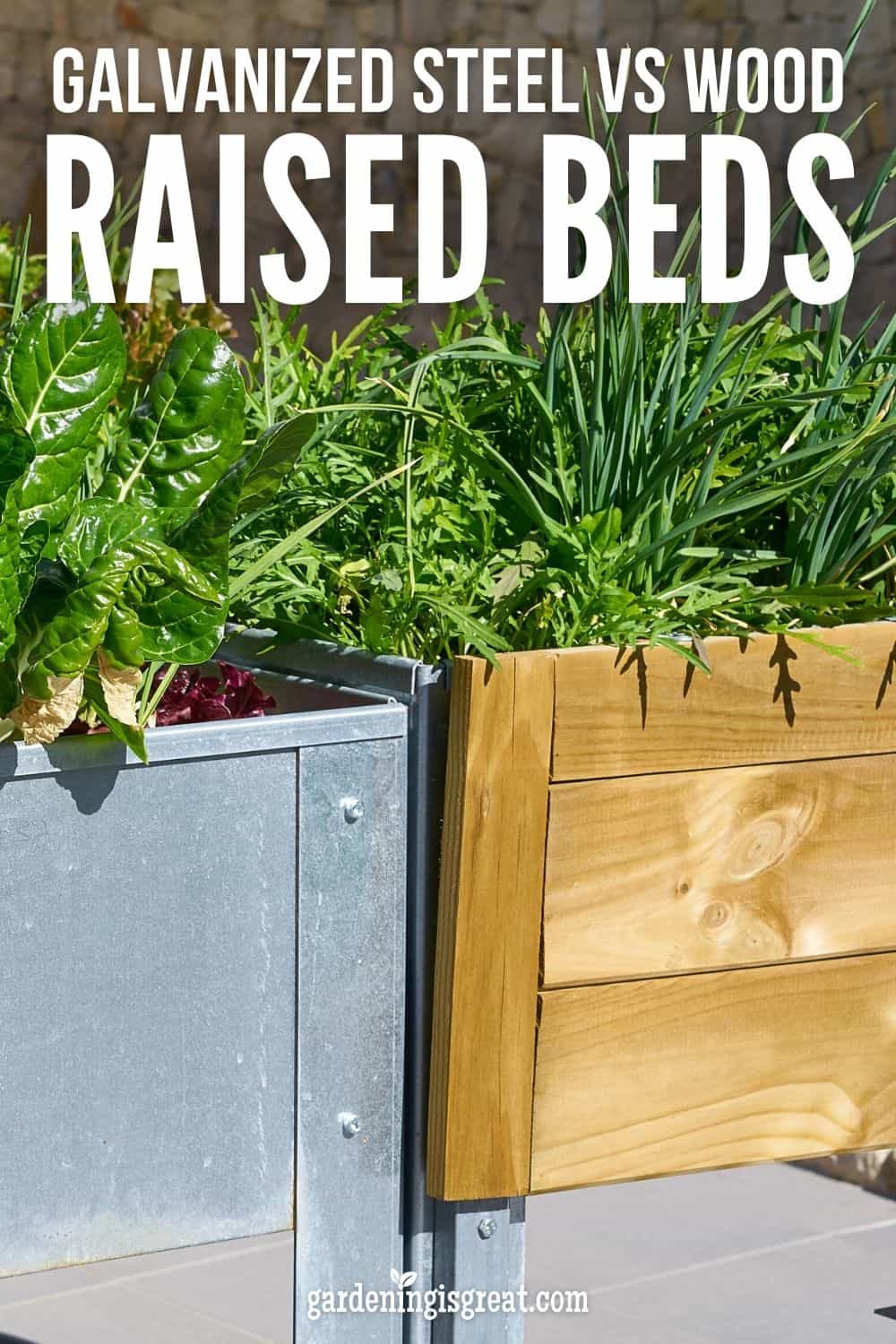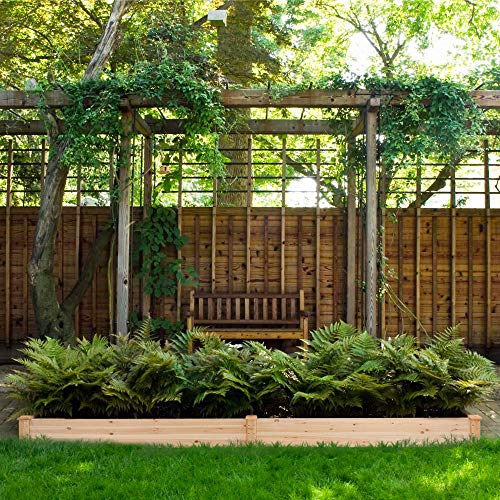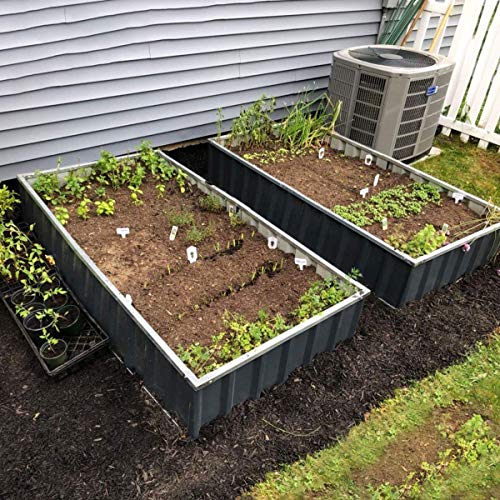Galvanized Steel Vs Wood Garden Beds: Which is Best?
Raised garden beds are a really popular choice for growing plants in many gardens. They provide different levels, are aesthetically pleasing, help to protect your plants from pests, and minimize weed growth.
But, if you are considering building raised garden beds in your garden, you may be asking yourself what is the best material to use?

This post contains affiliate links that earn me a commission at no additional cost to you.
Plastic, stone, wood, and metal are all material options for creating raised garden beds. However, galvanized steel and wooden garden beds are popular choices due to their strength and durability.
But which material is best?
Both galvanized steel and wood have pros and cons and various aspects need to be taken into account before making a final decision and purchase.
Here’s everything we’ll dive into:
What to Consider When Building Raised Garden Beds?
Before we compare galvanized steel vs wood garden beds, there are a few things you need to consider.
This list of considerations is important to go over before purchasing your raised garden beds as they can help you select the best material for your garden.

But also, more importantly, help you select the right material that takes growing plants safely into account.
Design
First and foremost, consider the shape and layout of your raised garden beds. Certain materials are more flexible than others. Plastic and steel for example are flexible and can provide a range of shapes and sizes for you to consider.
Whereas more rigid materials such as wood or concrete will provide a rectangular or square design only.
Aesthetics
Are you looking for a natural appearance or something more bold and colorful?
Aesthetics will vary considerably depending upon the material you choose.
If you are looking for a natural material, wood or composite lumber would be your best choice. Whereas plastic is available in a variety of colors and finishes, to suit your preferences.
Life-span
Not all materials last the same length of time. If your raised garden beds are only temporary, then it is best to select beds made of materials that aren’t as durable e.g. wood.
However, if you would like your raised garden beds to last a long time, 20+ years, then select a durable, long-lasting material to save you costs, time, and resources e.g. steel, plastic, or concrete blocks.
Cost
Cost can be a huge factor in which materials you select for your raised garden beds. Certain materials are a lot more expensive than others. But, these same materials tend to have a longer lifespan. So although have a high upfront cost, can work out cheaper in the long run.
Safety
Finally, you must take into account whether the material you are using to build your raised garden beds leaches any toxins into your soil. This isn’t so much of a problem if you are focused solely on growing flowers.
However, you do need to take this seriously if growing fruit or vegetables within your raised beds.
Materials such as recycled wooden pallets could contain toxins that leach into your soil and your plants. There is no way of finding out the original source of recycled pallets, let alone any paints that may have been used on them.
Considering these 5 points above will help you know more about your material needs and narrow your list further.
To help, let’s take a closer look at the pros and cons of both Wood and Galvanised steel, two durable and popular choices for building raised garden beds.
Pros and Cons of Using Wood for Raised Garden Beds
Using wood for raised garden beds is a popular material choice due to its natural appearance. It blends in with any garden and compliments the natural greens and browns of the leaves and soil. Wood isn’t too heavy to build with, can easily be cut to size, and contains the soil well.
Pros to using wood for your garden beds:
Budget-Friendly
As wood is readily available and not in short supply, it helps to keep its costs down and creates a budget-friendly material.
Many people especially enjoy taking the DIY route and create their own raised garden beds using old, recycled pallets.
Range of styles
As touched on above, wood is readily available from sliced tree logs, tree stumps cut in half, to stacked broken pallets.
Using wood can create texture and visual appeal in your garden whilst containing the soil within your raised bed and helping to lower the risk of pests and weeds.
Cons to using wood for your garden beds:
Not long-lasting
Unfortunately, wood is not the best choice of material if you aren’t wanting to redo your raised beds in 10 years.
Wood provides the natural appeal, but it is susceptible to rotting and being eaten by termites.
Depending on the type of wood used, your garden beds may last around 10 years, 20 max if using a more expensive and durable wood such as redwood.
Pros and Cons of Using Galvanized Steel Garden Beds
For those who like an industrial finish to their raised garden beds, galvanized steel can be a good choice of material.
Galvanized steel, though more expensive, is durable and non-toxic, so a suitable material for your beds. The material is lightweight and extremely easy to assemble.
Pros to using galvanized steel for your garden beds:
Durability
Galvanized steel is strong and does not rot or degrade. Being a metal, it does rust from rainwater. However, it can be 20 years before the rusting has such an impact that it needs replacing.
Due to being so durable, it can also be shaped without causing damage. Unlike inflexible wood, galvanized steel can be molded and can provide rounded edges for your garden beds. This is a safer option for those with younger children than the sharp edges of the wood.
Safe
The galvanized steel used to create garden beds is made from pure zinc to reduce levels of lead pollution. With that being said, zinc only tends to leach in extremely acidic water and isn’t a huge concern when used for garden beds.
Zinc also is a beneficial mineral that plants require, so the small amount of zinc that may leach into your soil is soaked up by your plants and helps contribute to their health. We also need a certain amount of zinc in our diet, and hence it is beneficial, rather than harmful to our health if we consume fruits and vegetables grown in a galvanized steel raised bed.
Cons to using galvanized steel for your garden beds:
Expensive
Galvanized steel is at least three times the price of wood for the same amount of material. It is a more expensive option. However, that upfront cost is balanced by the fact it lasts considerably longer than wood.
Amount of Resources
As this resource is manipulated, shaped, and treated, it is often not readily available like recycled pallets.
If you want to use galvanized steel for your garden beds, you will need to purchase it from a garden center.
Which Garden Bed is Best?
So which is best for you? Well, your choice comes down to affordability, appearance, and durability.
If you are wanting something that you do not have to replace for a long time and see value in the upfront expense, then galvanized steel would be the perfect option.
However, if you are on a tighter budget and don’t mind a bit of extra maintenance in a few years’ time, then creating your very own DIY raised garden beds with recycled wood pallets may be the way to go.
Looking at more options? Check out some of our other raised bed guides:





